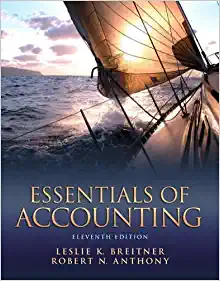Question
1) Preparing Common-Size Income Statements by Using Base Period Horizontal Analysis Hernandez, Inc. provided the following income statements for its first three years of operation:
1) Preparing Common-Size Income Statements by Using Base Period Horizontal Analysis
Hernandez, Inc. provided the following income statements for its first three years of operation:
|
| Year 1 |
| Year 2 |
| Year 3 |
| Net sales | $1,000,000 |
| $1,100,000 |
| $1,250,000 |
| Less: Cost of goods sold | (700,000) |
| (750,000) |
| (810,000) |
| Gross margin | $ 300,000 |
| $ 350,000 |
| $ 440,000 |
| Less: | |||||
| Operating expenses | (200,000) |
| (243,000) |
| (310,000) |
| Income taxes | (40,000) |
| (41,000) |
| (52,000) |
| Net income | $ 60,000 |
| $ 66,000 |
| $ 78,000 |
| Prepare common-size income statements by using year 1 as the base period. (Note: Round answers to the nearest whole percentage.)
2.
Preparing Income Statements by Using Net Sales as the Base: Vertical Analysis Hernandez, Inc. provided the following income statements for its first 3 years of operation:
Required:
3.
4.
5.
6.
7.
|
 1) Preparing CommonSize Income Statements by Using Base Period Horizontal Analysis Hernandez, Inc. provided the following income statements for its first three years of operation: Net sales Year 1 Year 2 Year 3 $1,000,000 $1,100,000 $1,250,000 Less: Cost of goods sold (700,000) (750,000) (810,000) Gross margin $ 300,000 $ 350,000 $ 440,000 (200,000) (243,000) (310,000) Income taxes (40,000) (41,000) (52,000) Net income $ 60,000 $ 66,000 $ 78,000 Less: Operating expenses Prepare commonsize income statements by using year 1 as the base period. (Note: Round answers to the nearest whole percentage.) Hernandez, Inc. Income Statements Years of Operation Year 1 Dollars Year 1 Percent Net sales $1,000,000 ? Less: Cost of goods sold (700,000) ? Gross margin $ 300,000 ? Operating expenses (200,000) Income taxes Year 2 Dollars % Year 2 Percent $1,100,000 ? (750,000) ? $ 350,000 ? ? (243,000) (40,000) ? Net income $ 60,000 ? Year 3 Dollars $1,250,000 ? (810,000) ? $ 440,000 ? ? (310,000) ? (41,000) % % Year 3 Percent ? (52,000) ? $ 66,000 ? $ 78,000 ? % % % Less: % % % 2. Preparing Income Statements by Using Net Sales as the Base: Vertical Analysis Hernandez, Inc. provided the following income statements for its first 3 years of operation: Net sales Year 1 Year 2 $1,000,000 $1,100,000 Less: Cost of goods sold (700,000) (750,000) Gross margin $ 300,000 $ 350,000 (200,000) (240,000) Income taxes (40,000) (44,000) Net income $ 60,000 $ 66,000 Less: Operating expenses Required
1) Preparing CommonSize Income Statements by Using Base Period Horizontal Analysis Hernandez, Inc. provided the following income statements for its first three years of operation: Net sales Year 1 Year 2 Year 3 $1,000,000 $1,100,000 $1,250,000 Less: Cost of goods sold (700,000) (750,000) (810,000) Gross margin $ 300,000 $ 350,000 $ 440,000 (200,000) (243,000) (310,000) Income taxes (40,000) (41,000) (52,000) Net income $ 60,000 $ 66,000 $ 78,000 Less: Operating expenses Prepare commonsize income statements by using year 1 as the base period. (Note: Round answers to the nearest whole percentage.) Hernandez, Inc. Income Statements Years of Operation Year 1 Dollars Year 1 Percent Net sales $1,000,000 ? Less: Cost of goods sold (700,000) ? Gross margin $ 300,000 ? Operating expenses (200,000) Income taxes Year 2 Dollars % Year 2 Percent $1,100,000 ? (750,000) ? $ 350,000 ? ? (243,000) (40,000) ? Net income $ 60,000 ? Year 3 Dollars $1,250,000 ? (810,000) ? $ 440,000 ? ? (310,000) ? (41,000) % % Year 3 Percent ? (52,000) ? $ 66,000 ? $ 78,000 ? % % % Less: % % % 2. Preparing Income Statements by Using Net Sales as the Base: Vertical Analysis Hernandez, Inc. provided the following income statements for its first 3 years of operation: Net sales Year 1 Year 2 $1,000,000 $1,100,000 Less: Cost of goods sold (700,000) (750,000) Gross margin $ 300,000 $ 350,000 (200,000) (240,000) Income taxes (40,000) (44,000) Net income $ 60,000 $ 66,000 Less: Operating expenses Required Step by Step Solution
There are 3 Steps involved in it
Step: 1

Get Instant Access to Expert-Tailored Solutions
See step-by-step solutions with expert insights and AI powered tools for academic success
Step: 2

Step: 3

Ace Your Homework with AI
Get the answers you need in no time with our AI-driven, step-by-step assistance
Get Started


